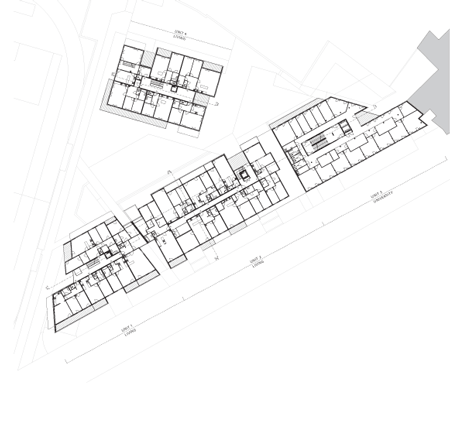
Wohngarten Sensengasse by Josef Weichenberger Architects and room8 architects
Josef Weichenberger Architects and Room8 Architects have completed a residential project next to a park in Vienna, Austria.
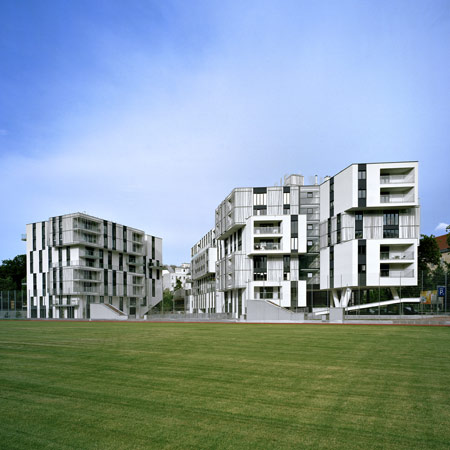
The building is made up of three connected structures and includes 103 apartments, plus offices and a library.
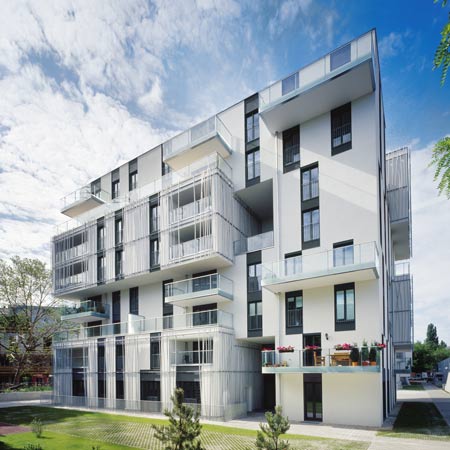
Photographs are by Lisa Rastl.
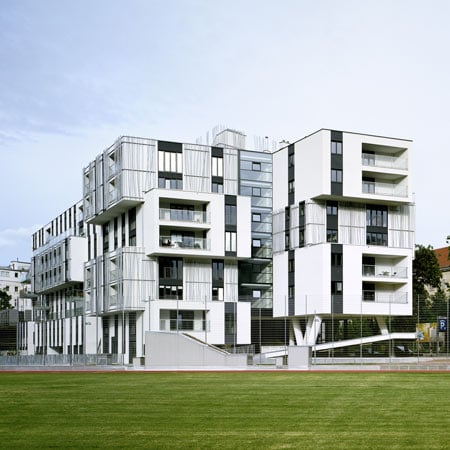
Here's some more information from Josef Weichenberger Architects:
--
In September, 2004, BIG together with Viennaer Heim Wohnbau GesmbH decided over the allocation of the project for the partial construction on the area of “Campus Sensengasse”. The submitted projects of the 5 participating architect groups were evaluated in two jury meetings. Only “young” architects were allowed to take part in this project. The public were represented by district mayoress Martina Malyar and via a member of Agenda 21.
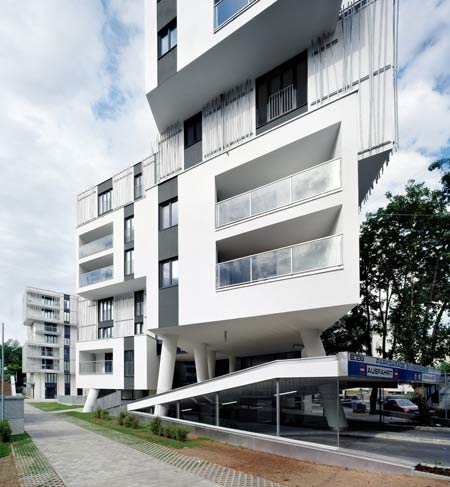
Those invited were:
- Johannes Kaufmann Architektur
- SYNN architekten
- Mascha & Seethaler Architekten
- SCHAUER SCHLÄFER SCHMOEGER
- JOSEF WEICHENBERGER_architekten und ROOM8 ARCHITECTS
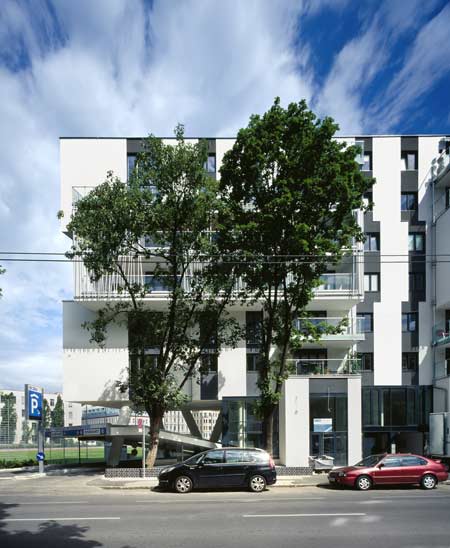
Terms of reference for the project:
- concept under the premises of university usage and residential use in the manner specified.
- economic plausibility in terms of Wohnbauförderung (housing subsidy).
- integration of a Fitness centre.
- optimal positioning of the structure with regard to minimal possible noise emissions.
- a high degree of non-built areas.
- careful handling of the available green areas and the existing trees.
- the development of innovative concepts for the greening of the building itself.
- the creation of a connection to the Arne Carlsson Park.
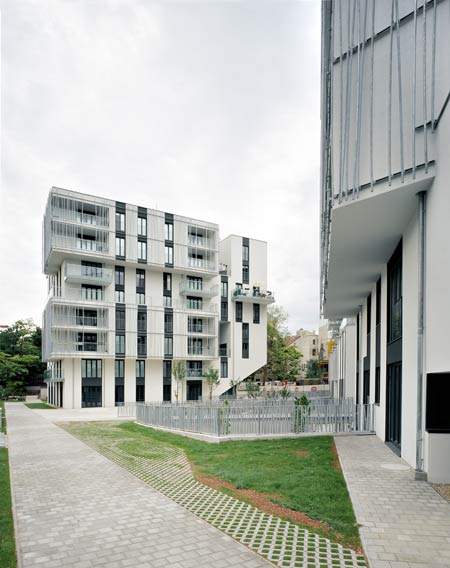
The project from the architects of “JOSEF WEICHENBERGER_architects” and “room8 architects” was unanimously chosen by the jury during their last meeting on 5th November, 2004.
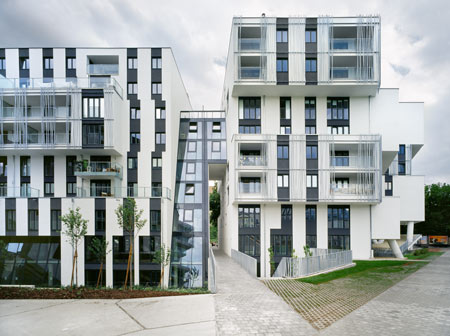
The situation
The urban environment of the plot is influenced by a perimeter block development along the Sensengasse coming from the Northwest which in the area of the construction site abruptly moves over to a green area used for sports that has a large stock of trees along the Sensengasse.

At the crossroads of Sensengasse and Spitalgasse, the office building Haus der Forschung (“Research House”) (BIG) is projected. In the southern continuation there is a strip of land with an adjoining building belonging to the old general hospital. There is a sports ground in the western area that is planned to be re-designed in the same size and shall have an underground car park and an underground sports-hall built beneath it. In the bordering area to the north, there is the Anne Carlson Park, as well as a primary school with children’s day-care facilities.
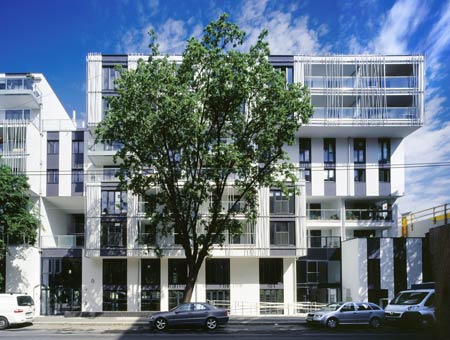
The urban planning concept
The proposed project responds to the described situation with a linear building structure along the Sensengasse and a free-standing, “point-house” positioned in an extended park. The linear construction, composed of three connected individual buildings, creates a membrane-like break between the park area and the urban space. In doing so, particular attention has been paid to permeability with paths and visual connections in the direction of the park on the one hand and the partly two-floor ground floor area forms part of the open urban space.
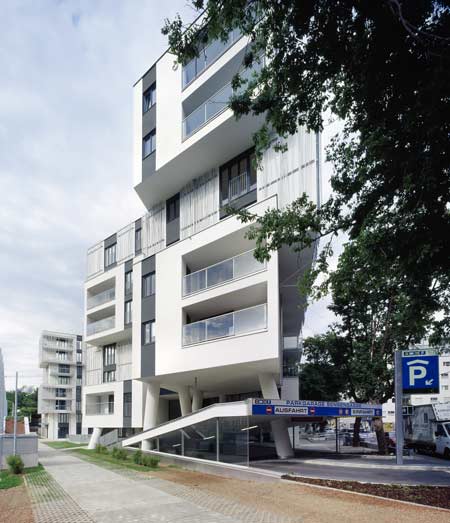
These spaces with their views upon the surrounding greenery create a “green break” in association with the untouched and completely preserved tree avenue in the Sensengasse which fuse the façade of the garden and the airy opening of the “vertical green” together with the park to form one organic whole.
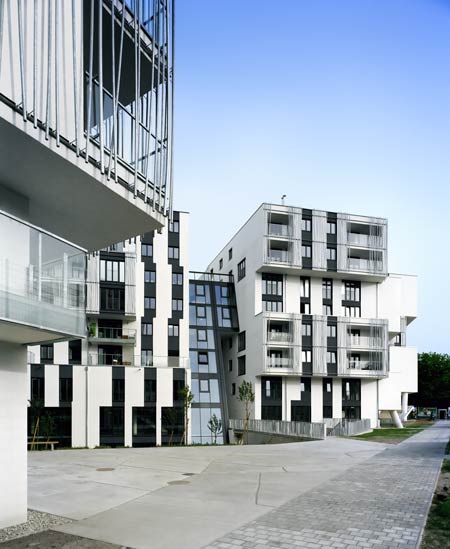
The row of trees along the Sensengasse is taken up into the arrangement of the individual structures, so that the project reacts with sensitivity to the existing tree stock. The green area does not end at the perimeter of the property. Instead, it interweaves with the planted greenery of the old hospital, the sports ground and the school.
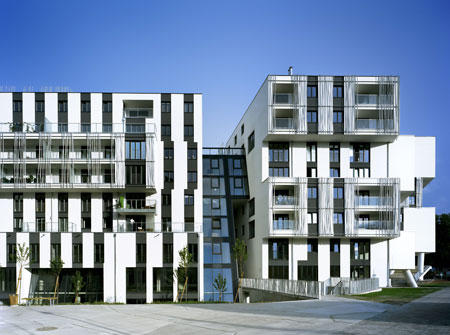
Through the combination of a sensible development together with an eventful layout of paths through the area, it was possible to maintain the quality of this urban recreational area. The free-standing point house marks the construction’s boundary to the northwest and stands, as a result of the now clearly defined park perimeter, literally in the middle of greenery.
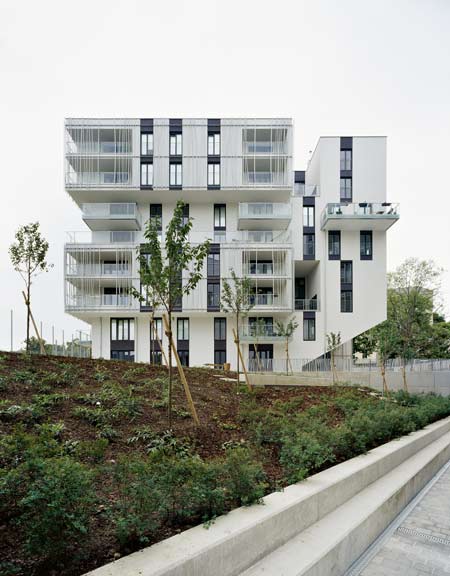
The architectural concept
The three structures along Sensengasse consist of:
- the University building with a central developed core;
- the middle construction which provides for office space at and below ground level, as well as residential property on the floors above;
- and a building at the head which due to its pushing formulation and open, two-floor ground floor zone symbolically creates the function of an entrance into the park and sport landscape.
The arrangement, structure and conception of these buildings create great variety and a combination of residential types with different open and green spaces such as floor, roof and façade gardens on the one hand and the optimal amount of illuminated façade areas.
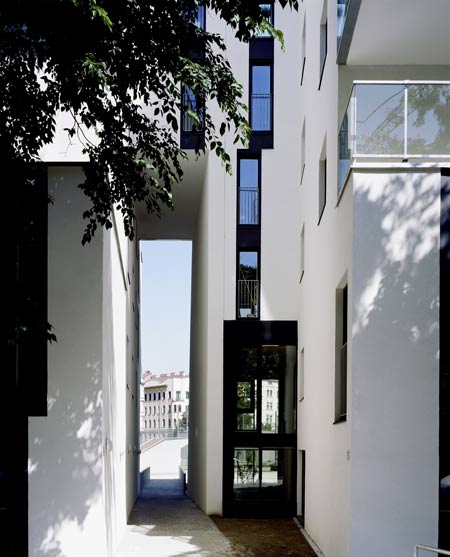
The treetops along Sensengasse are “close enough to touch” for many of the apartments and create protection from both dust and noise at the same time. The algorhythm of the formal concept is based on the sequential staggering of 2 floors which are brought together to form a unit on the one hand and the spatial intertwining of angular-shaped elements.
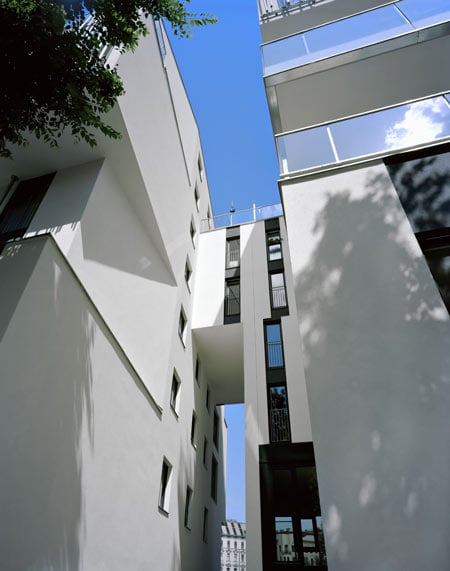
The alternating forward and backward bounds in connection with the opening of the construction create the effect of spaciousness and intricacy of design which make it possible to bring light and air deep into the building. In this way, smaller B-types can also be exposed and “pointed through”. The modularity of this system, when consistently applied, enables a high variability in the configuration and amalgamation of the individual apartments to be achieved, and that in all three dimensions – side by side, behind one another, and above each other in the form of maisonettes. In the end, it is exactly these irritations of the system which disintegrate the structure’s large form and bring it to life.
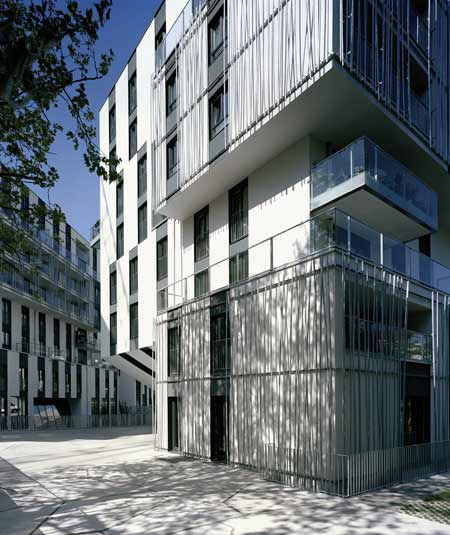
Furthermore, there lies an additional quality due to the interesting views made possible through the exposed perimeter. The apartments are arranged so that between 3 and 6 apartments can be entered on each floor with a central, but still naturally illuminated, staircase which creates interesting views and light effects through the various indentations.

The “point-house” is to be found in the park and has been designed in such a way that the apartments demonstrate various sizes and combinations. Among them are single-storey and maisonette types which are suitable for differing generations as well as loft apartments in various sizes.
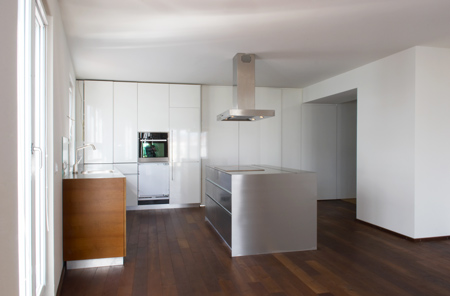
Great value has been placed upon the creation of private greenery in the form of two-storey integrated gardens as well as hanging façade greenery. The roof areas are allocated to the apartments below by means of roof gardens, terraces and atria. Furthermore, it is planned that there shall be green areas on the roofs of the buildings along Sensengasse available for common use.
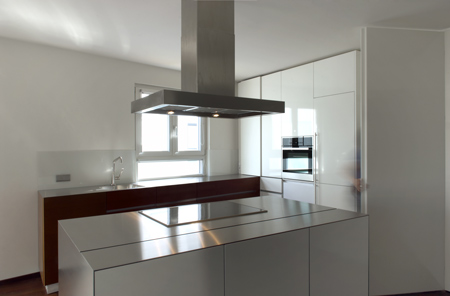
The entry and administration area can be found in the plinth area of the university building.
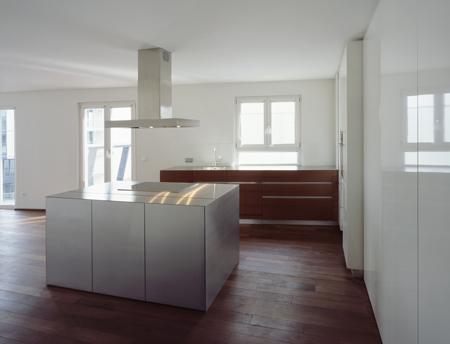
Two institutes share the property; the institutes for Education and for Languages together with a two storey library on the lower floors.
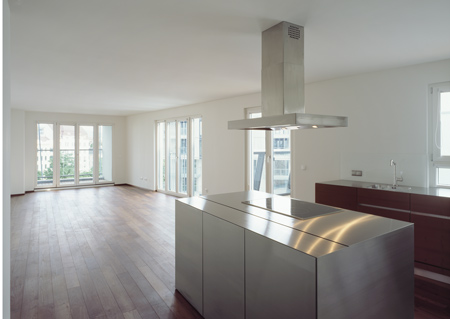
The other two buildings along Sensengasse belong to the OeFSE (Austrian Research Foundation for International Development).
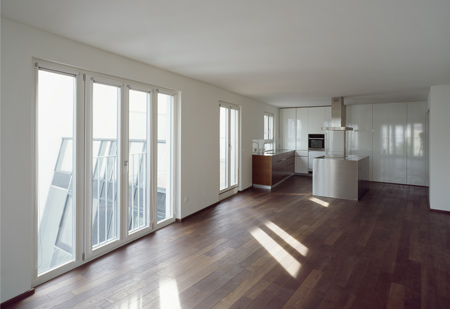
The façades which face the street provide strongly contrasting views into and the through the office landscape together with its generous two-storey air spaces.
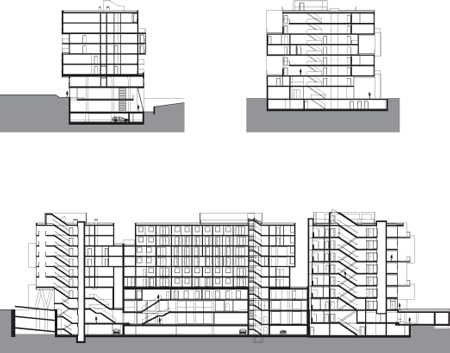
Through the spatially lower open space on the parking side and the chosen slanted glazing towards the “green”, this area is actively integrated both optically and physically.
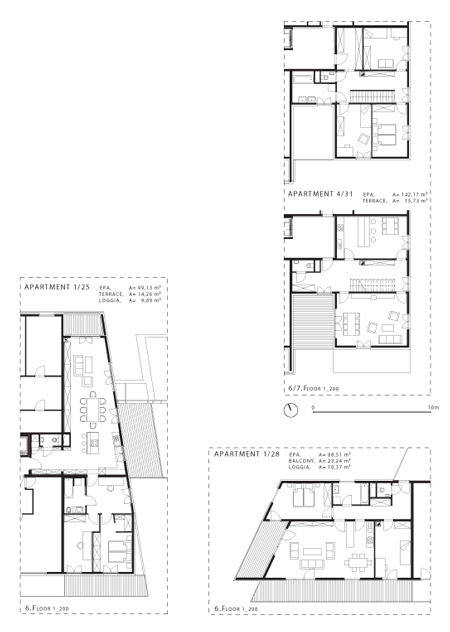
The view from the street into the “green” stretches across a large part of both residential buildings.
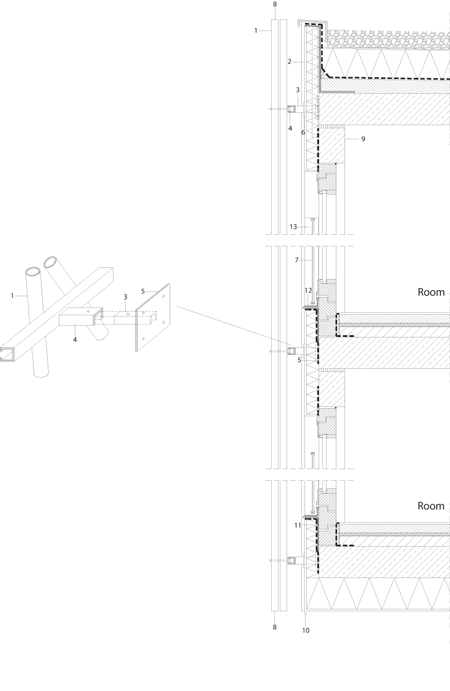
Key figures
Size of the construction area: 7’160m²
Built up area: 3’100m²
Volume: 60’000m³
Net usable area: 10’800m² for residential use
6’300m² for use by the university
Number of apartments: 103 apartments supported and privately financed
Investment sum: ca. 20 million Euros (excluding land costs)
Realisation: 2007 / 2009
Team of architects: Josef Weichenberger_architekten und
room8 architects
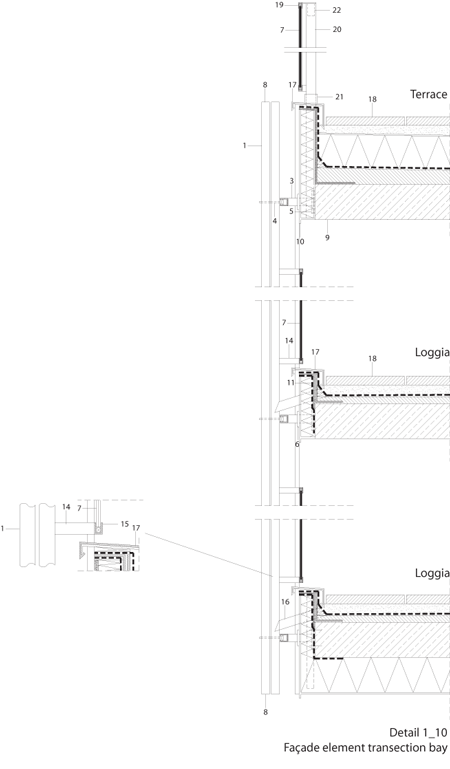
Team:
JOSEF WEICHENBERGER_architects
Stefan Fussenegger
Friedrich Hähle
Martin Mostböck
Sandy Panek
Stefan Pfefferle
Ines Standhartinger
Mark Steinmetz
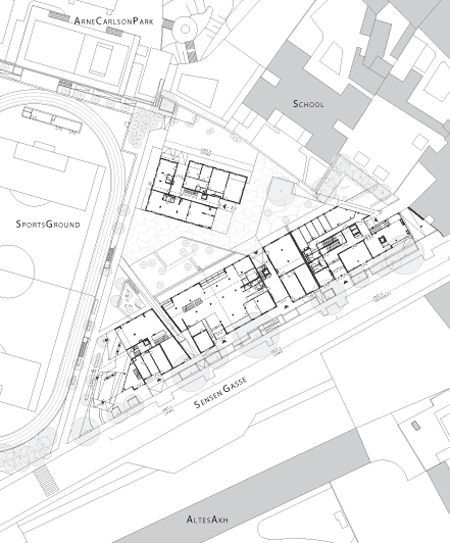
room8 architects
Patric Arlanch
Conrad Bauer
Katrin Bernsteiner
Daniel Doldt
Johann Posch
Benno Wutzl
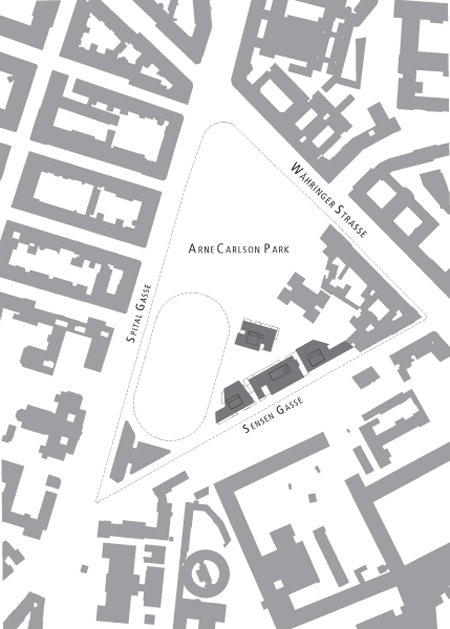
Name / Description* Wohngarten Sensengasse
Street* Sensengasse 1-3
Post Code* 1090
Town* Vienna
District 9., Alsergrund
Region Austria
Usage Housing, offices, library, University for Languages and Education
Competition period 2004
Planning status completed
Planning start 01/2006
Start of construction 2007
Completion 04/2009
Plot area 7 217 m²
Gross floor area -
Built up area 3 050 m²
Usage area ca. 18 000 m²
Volume ca. 60 000 m³
Construction costs ca. 25 million Euros
Construction mixed construction, large concrete slabs, site-mixed concrete
Space allocation plan 103 apartment units, library, offices, university
